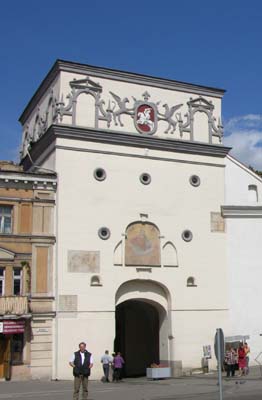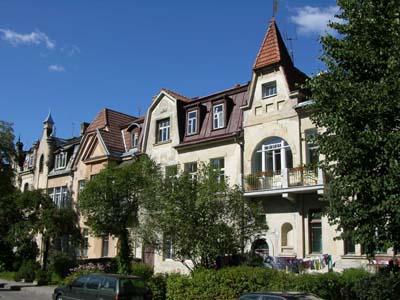En-route to Vilnius, I visited Pilsrundale,
Versailles of Latvia, 12 km from Bauska. By turns infirmary
during the WWI, school and attic during the WWII,
plundered then left in a neglected state, it has been since the independence of
Lithuania the object of a plan of restoration. Certain rooms and the
garden were in work at the time of my passage. Its visit is worth the
turning.
The E67 road from the border to Panevezys was
under construction with the financing assistance of the
European Union. Then the E272 highway led to Vilnius where I easily
found the guarded carpark mentioned by Stephen.
Vilnius, unlike the two other Baltic capitals, is not a harbour
city. It was founded in 1323 by the Grand-duc of Lithuania Gediminas. It
became the capital of a kingdom in particular including the Ukraine, Bielorussia before falling under sovereignty from Russia. The town of
Vilnius was even annexed by Poland. Of its long history, the city
preserves a very important artistic inheritance which was left in a
neglected state during the years of USSR dependency.
Currently Vilnius is under reconstruction, one
excavates, in front of the Town hall, one covers the building frontages in repair,
one empties the buildings by preserving the frontages worthy of interest.
One will still need many years to complete the restoration of this
cultural inheritance.

Street
Gedimino
“Les Champs Elysées”
Vilnius

Frank house, of the XVIIth
century
Stendhal, bursar of the
Napoleonean army, lived there
Today it
houses the French art centre

St. Anne's Church
built in 1495

Ausros
Vartu street
True decor of theatre

The Gates of Dawn
Only still
remaining gate
of the ten
wall gates of the city

St. Casimir's Church,
1604
Baroque interior

Orthodox Church of the Holy
Spirit, 1567
Baroque interior

The
University
the S. Daukantas
courtyard

Montwill
colony
buildings of “Art nouveau”
style

The Green
Bridge
Statues, “socialist
realism” style,
on background of secular and of
modernity
The old town of Vilnius has 22
churches of all confessions, 18 museums and a large number of palaces
worthy of interest. All the artistic styles and influences are represented
from Roman to Baroque.
The University
was created in 1570 by the Jesuits. The old campus is arranged around 12
courtyards. Some rooms are covered with sumptuous
frescos.
The Jewish community was
established back to the XIVth century. It was culturally very influential.
Vilnius had more than one hundred synagogues before the WWII.
There remains only one about it.